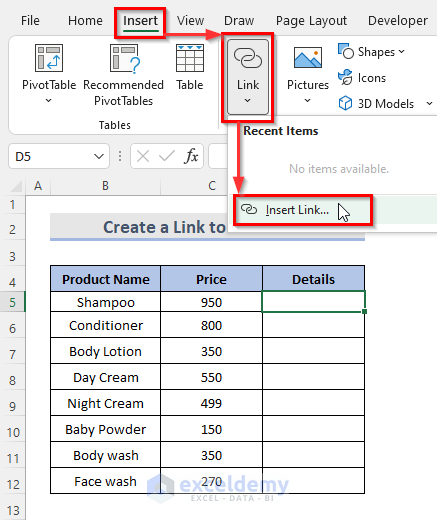Link Excel Sheets: Easy Guide to External Workbook Connections

Linking Excel sheets from different workbooks is a powerful feature that enables users to consolidate data, automate processes, and enhance productivity. Whether you're managing financial models, sales data, or any other type of information, knowing how to link external workbook connections can save you countless hours. This guide will walk you through the steps necessary to establish these connections seamlessly.
Understanding External Workbook Connections

External workbook connections refer to linking data from one Excel workbook to another. This functionality allows you to:
- Sync Data: Automatically update data across multiple sheets when changes are made to the source workbook.
- Combine Data: Merge information from various files into a single report or analysis.
- Improve Collaboration: Share parts of complex spreadsheets with team members without sending the entire file.
Steps to Create an External Workbook Link

- Open the Workbooks:
First, ensure that both the source and destination workbooks are open in Excel.
- Navigate to the Cell:
In the destination workbook, select the cell where you want the linked data to appear.
- Create the Link:
Begin by typing an equal sign (=) in the destination cell to start a formula. Then, switch to the source workbook, select the cell or range you want to link, and press Enter.
📌 Note: Use the formula =[SourceWorkbook]SheetName!CellReference to create the link directly.
How to Handle File Paths

When linking external files, file paths play a crucial role:
- Use relative paths when workbooks are stored together to simplify updating links if folders are moved.
- Use absolute paths for linking to files that might not be moved frequently or are stored in different locations.
| Link Type | Example Path |
|---|---|
| Relative | =[..\SourceWorkbook.xlsx]SheetName!CellReference |
| Absolute | ='C:\Data\SourceWorkbook.xlsx'!SheetName!CellReference |

Managing and Updating Links

Over time, you might need to update or refresh these links:
- Use Data > Edit Links to manage all connections in your workbook.
- Excel allows you to update links automatically or manually depending on your settings.
🔔 Note: Automatic updates require both the source and destination files to be accessible. If one is missing or moved, you might encounter errors or broken links.
Best Practices for External Workbook Links

To ensure smooth operation and minimize errors:
- Keep Source Files Accessible: Ensure all linked workbooks are accessible, either by keeping them on a shared drive or by syncing them regularly.
- Use Naming Conventions: Adopt a clear naming convention for your files and sheets to make maintenance easier.
- Document Your Links: Keep a record of where links are placed within your workbook for easy reference and troubleshooting.
By following these steps and best practices, you'll be able to efficiently manage your data and keep your reports up to date with minimal effort.
What happens if I delete the source workbook after creating the link?

+
If you delete the source workbook, Excel will display an error message stating that the file cannot be found, and the linked cells will show #REF! errors.
Can I link to closed Excel files?

+
Yes, Excel supports linking to closed files, but you must use the correct file path or URL when setting up the link.
How do I break an external workbook link?

+
To break a link, go to Data > Edit Links, select the link, and click 'Break Link'. Note that this will remove all formulas related to that link, replacing them with the current values.
In summary, linking Excel sheets across different workbooks is an invaluable technique for data management. It allows for dynamic updates, improved collaboration, and the creation of comprehensive reports from disparate data sources. By following the steps and adhering to best practices outlined in this guide, you can harness the full potential of Excel’s linking capabilities, making your work more efficient and your data more robust.